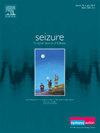哈萨克斯坦的癫痫趋势:利用 2014-2020 年全国统一电子健康系统数据进行的回顾性纵向研究。
IF 2.7
3区 医学
Q2 CLINICAL NEUROLOGY
引用次数: 0
摘要
研究目的本研究旨在利用 2014-2020 年间的大规模行政卫生数据库,对哈萨克斯坦的癫痫流行病学进行估算:我们利用哈萨克斯坦统一国家电子健康系统对七年的发病率和流行率、残疾调整生命年 (DALY) 和全因死亡率进行了调查。我们使用 Cox 比例危险回归模型来分析影响存活率的社会人口、精神、行为和神经因素。总体分析使用 STATA (V.16) 进行:队列中共有 82907 名患者,每 10 万人中的癫痫发病率从 2014 年的 26.15 人大幅增至 2020 年的 88.80 人。患病率也呈类似趋势,从 2014 年的 26.06 人增至 2020 年的 73.10 人,增加了两倍。虽然死亡率有所波动,但老年人和儿童的死亡率最高,分别为每千人年 9.97 例和 2.98 例。残疾调整寿命年数显示了巨大的疾病负担,在研究期间损失了 153,532 个残疾调整寿命年数(每 100,000 人中损失 824.5 个)。一些合并症,如脑瘫(调整后危险比为 2.23)和中枢神经系统萎缩(危险比为 27.79),明显增加了全因死亡率。此外,锥体外系和运动障碍(aHR 2.16,p = 0.06)和中枢神经系统脱髓鞘疾病(aHR 6.36,p = 0.06)的死亡风险也呈上升趋势:据我们所知,这是中亚地区首次对大型癫痫队列进行研究。研究结果突出表明,有必要采取有针对性的干预措施,以应对日益加重的癫痫负担,尤其是儿童、男性和患有神经系统合并症的患者。本文章由计算机程序翻译,如有差异,请以英文原文为准。
Epilepsy trends in Kazakhstan: A retrospective longitudinal study using data from unified national electronic health system 2014–2020
Objective
This study is designed to estimate the epidemiology of epilepsy in Kazakhstan, using a large-scale administrative health database during 2014–2020.
Methods
Using the Unified National Electronic Health System of Kazakhstan over a seven-year span, we explored incidence and prevalence rates, disability-adjusted life years (DALY), and all-cause mortality. Regression models using Cox proportional hazards were used to analyze the sociodemographic, mental, behavioral, and neurological factors affecting survival. Overall analyses were performed using STATA (V.16).
Results
The total cohort comprised of 82,907 patients, with a significant increase in the incidence of epilepsy from 26.15 in 2014 to 88.80 in 2020 per 100,000 people. Similar trends were observed in the prevalence rates, which tripled from 26.06 in 2014 to 73.10 in 2020. While mortality rates fluctuated, the elderly and children had the greatest rates of 9.97 and 2.98 per 1000 person-years respectively. DALYs revealed a substantial disease burden, with 153,532 DALYs (824.5 per 100,000) being lost during the study period. A few comorbidities, such as cerebral palsy (adjusted hazard ratio (aHR) 2.23) and central nervous system atrophy (aHR, 27.79), markedly elevated all-cause mortality. Furthermore, extrapyramidal and movement disorders (aHR 2.16, p = 0.06) and demyelinating diseases of the central nervous system (aHR 6.36, p = 0.06) showed a trend toward increased mortality risk.
Conclusion
To the best of our knowledge, this is the first study from Central Asia exploring a large epilepsy cohort. The findings highlight the need for targeted interventions to address the growing burden of epilepsy, particularly among children, male sex, and those with neurological comorbities.
求助全文
通过发布文献求助,成功后即可免费获取论文全文。
去求助
来源期刊

Seizure-European Journal of Epilepsy
医学-临床神经学
CiteScore
5.60
自引率
6.70%
发文量
231
审稿时长
34 days
期刊介绍:
Seizure - European Journal of Epilepsy is an international journal owned by Epilepsy Action (the largest member led epilepsy organisation in the UK). It provides a forum for papers on all topics related to epilepsy and seizure disorders.
 求助内容:
求助内容: 应助结果提醒方式:
应助结果提醒方式:


